A traditional Italian Sunday dinner, "il pranzo della domenica" is an opportunity for family bonding and celebration. A traditional meal structures with different courses. There is no need for a special occasion, it happens every Sunday. The family gets together for lunch right after Sunday Mass: 6 Italian meal courses, and the whole family is involved in the preparation and hard work in one way or another. In Italy, the Sunday meal is much more elaborate than the Italian-American households' Sunday sauce.
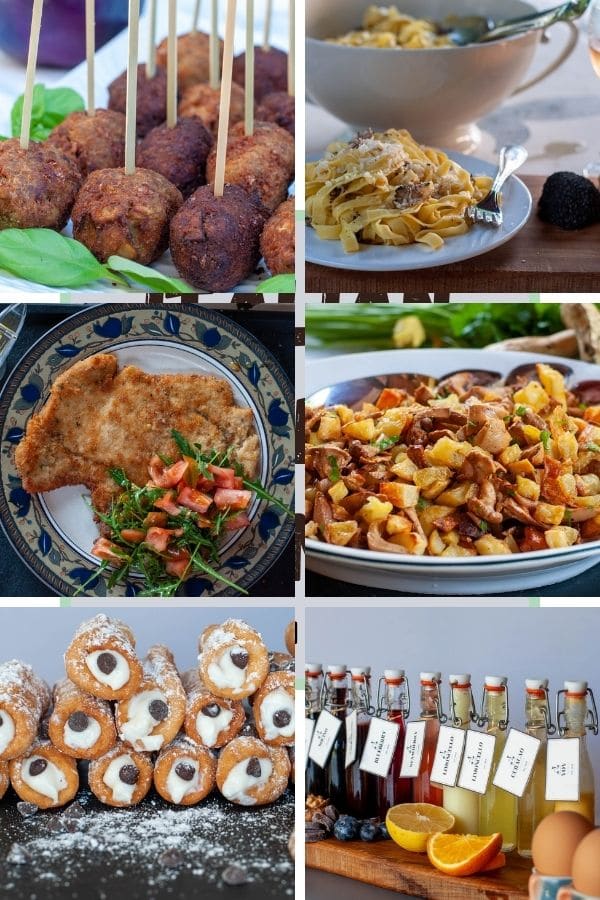
Genius Secrets and Tricks To an Italian 7-Course Feasts
Jump to:
- Genius Secrets and Tricks To an Italian 7-Course Feasts
- Traditional Italian meal courses
- Do Italians eat pasta every day?
- An Italian 13 courses dinner party menu
- The advantage of having many courses
- "Fare il bis" go back for seconds
- Appetizer course
- Primi piatti
- Secondi piatti
- Side dishes Contorni
- Cheese, desserts and liqueurs
- Build up memories
- Ideas for menus
- Planning an Italian party
- More articles you may like
Traditional Italian meal courses
Italians have dinner around 8 pm and since Monday is a working day, a traditional Italian dinner is usually very light.
However, the proper Italian Sunday meal is at lunchtime, and since it takes so long, it will often last until dinner.
In Italian cuisine, traditionally, lunches were the most important meals of the day. After lunch, people would nap and have a light dinner at night.
With modern office hours and the help of air-conditioning, habits have changed as there is no more need to hide from the midday heat. But the Sunday lunch remains a tradition.
A full Italian meal has a completely different meal structure compared to other countries.
We love abundance!
A family Sunday dinner is never an easy meal, we have a minimum of 6 courses made of authentic Italian recipes.
This is a traditional Italian meal structure:
- Antipasto or stuzzichino
- Primo piatto: first dish, which is usually pasta, risotto, soup, or gnocchi
- Secondo piatto: second course, main course: seafood or meat: beef, pork, lamb or poultry
- Contorno: side dish: Summer or Winter vegetables and/or potatoes
- Formaggio: Cheese course
- Dolce: Fruits and/or desserts
- Espresso and liqueur to close the meal

If we decide to have only one main course (either primo piatto or secondo), the traditional meal structure of our menu changes:
- The antipasto becomes more elaborate,
- If we are serving a Primo Piatto only: it would have either meat, seafood or abundant cheese included in the sauce (like a meat sauce, lasagna or pasta with meat or seafood)
- If we are serving a Secondo Piatto only: meat or seafood is served with a cold or warm side dish made of vegetables and an important portion of carbohydrates like polenta, potatoes, pie (torta salata), or a baked stew casserole.
- Cheese
- Fruits and/or desserts
- Espresso and liqueur at the end of the meal
To find out more how Italian dinner structure changed throughout history you can read the article: Italian food history and cultural influence.
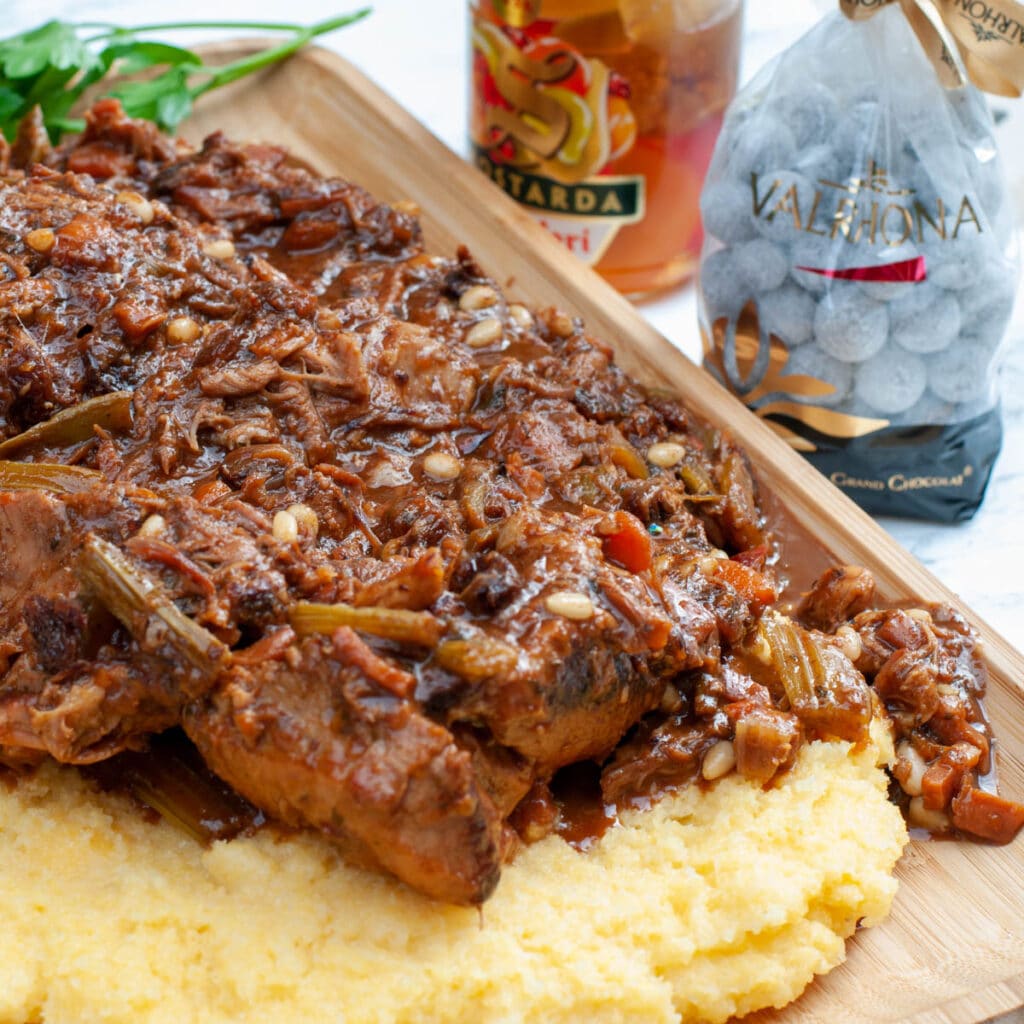
No sugary drinks, no cappuccino
For drinks, we only serve water or wine, no sugary drinks.
Red wine if we have meat and white wine for a seafood menu.
The drinks have to combine with the meal and enhance, not overwhelm, the flavors.
We end the meals with an espresso or/and a liqueur to help the digestion.
After all this food, I challenge anyone to drink a cappuccino!

Do Italians eat pasta every day?
Of course, on a day-to-day basis, we may either have a primo or a secondo, but each meal is always a mix of vegetables, carbohydrates, and proteins.
While ladies will try to reduce the pasta to keep their weight down, most Italian men (like my boys) have to have a pasta dish at everyday meals.
If their Italian mom doesn't have the energy to keep up with so much pasta (like me), Italian men learn to cook it themselves at a young age (my sons started at 13yrs).
Once they start college, they become very popular with their friends (and girls) as they have learned the skill of making delicious pasta in no time (motivational speech).
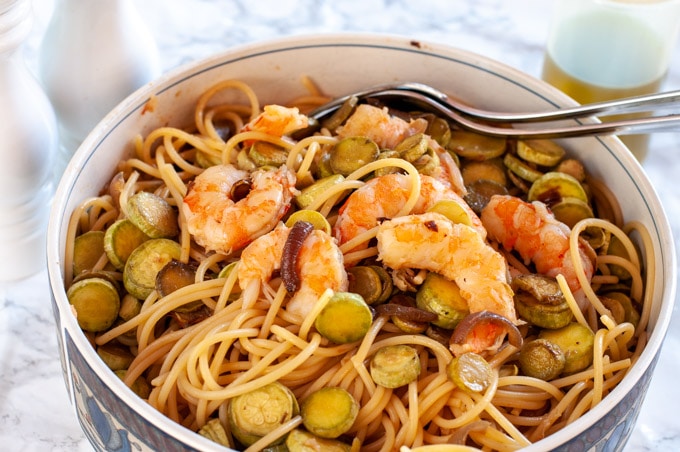
An Italian 13 courses dinner party menu
For special occasions like weddings, special birthday parties, or exceptional occasions, the number of courses and Italian flavors can increase exponentially.
The extravagant traditional Italian menus include:
- Nibbles: stuzzichini. Served while standing holding an aperitif
- Warm antipasti
- Cold antipasti
- First primo piatto with a delicate flavor
- Second primo piatto with a stronger flavor
- Secondo piatto made with seafood
- Lemon sorbet to cleanse the palate
- Secondo piatto made with white meat (chicken, rabbit)
- Secondo piatto made with red meat (pork, beef or lamb)
- Contorni: side dishes served with each secondo piatto
- Formaggio: Cheese platter
- Frutta e dolci: Fresh fruit and dessert
- Espresso and digestivo liqueur
That is why an Italian dinner lasts the entire day, takes a week to digest, and months to burn off.
A selection of homemade liqueurs is mandatory for good digestion.
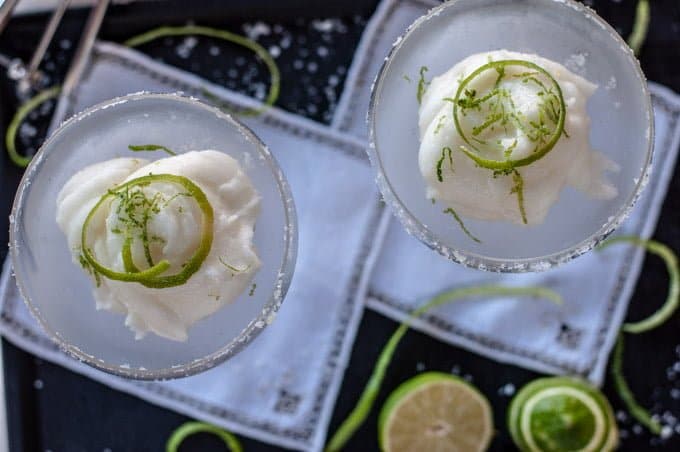
The advantage of having many courses
There are two main advantages to serving a long Italian meal:
- It gives your guests a wide choice of traditional Italian dishes in case they have some food allergy or intolerance or follow a special diet.
- When guests get to the secondo course, they will be quite full, so you don't need to prepare much meat or fish. As contorni and primi are usually less expensive, Italian meals can be abundant and lavish as they are more economical.
- One more good news! You will have leftovers and will not have to cook for the next few days.
Don't worry, everyone will help prepare, as those who don't know how to cook are responsible for buying pastries or starters.
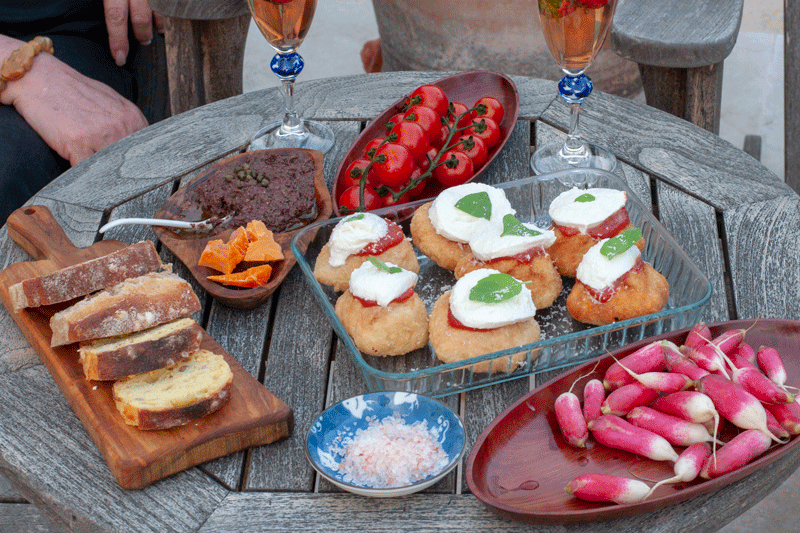
"Fare il bis" go back for seconds
Food is brought to the table in a serving dish. Everyone helps themselves with the portions they want to have.
Meals are never served directly on the dinner plate as in restaurants.
You would normally serve yourself a small amount and repeat for a second serving if you wish to...and everyone does!
The only dishes not served a second time are consommé, soup, cheese, and fruit.
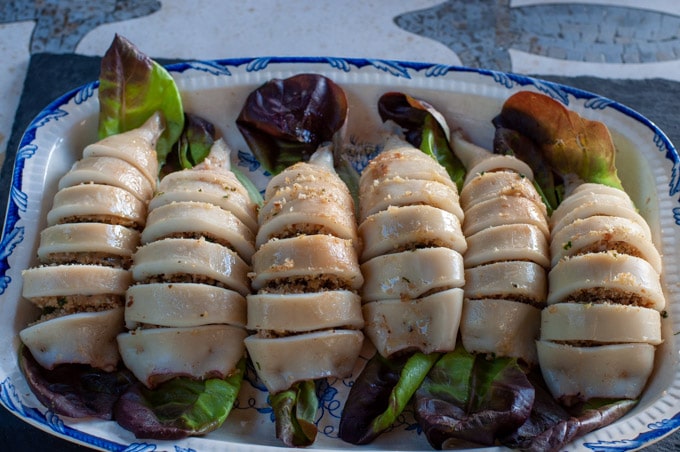
Appetizer course
Depending on the rest of the meal menu, the appetizers can be simple or elaborate.
Simple appetizers: stuzzichini
If your menu already has 4 to 5 courses, you just need to serve some nibbles as appetizers.
A simple Aperitivo includes some bites to eat with an aperitif before you sit at the table. Here are some ideas:
- small dishes of olives, nuts, salami slices, selection of hams and cheese cubes
- bruschetta or crostini with a simple pate or toppings like caponata, tapenade or eggplant caviar
- Small fried nibbles like crespelle, zucchini flower, eggplant balls, olive Ascolane, fried cremini or fried mozzarella sticks and balls.
As an aperitif, you can serve:
- Prosecco
- Spritz: ¼ cup - 6 cl Prosecco, 4 tablespoon - 4 cl Aperol, 1 tablespoon of tonic water
- Bellini: ⅓ cup - 10 cl Prosecco, 3 tablespoon - 5 cl of peach juice
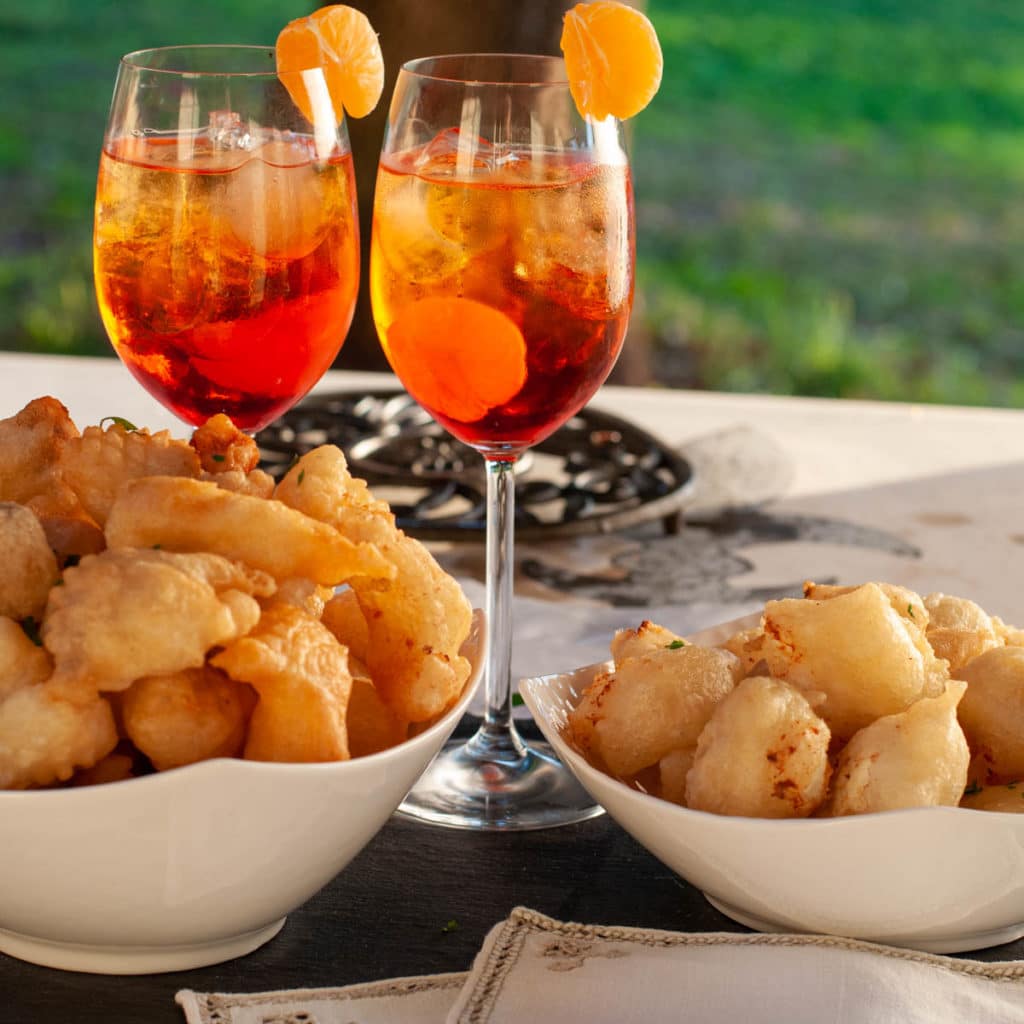
Elaborate appetizers
If you want to serve only a Primo Piatto or a Secondo Piatto, you can do that by preparing a more elaborate Antipasto.
An elaborate informal starter is called "rustici" assortment, which can include:
- Bruschetta with mozzarella and tomato or bacon and mushrooms
- Arancini
- Pizzette, fried pizza or focaccia bites
- Sausage rolls
Not everybody would make them fresh, you can easily buy them in any rosticceria, which is open on a Sunday and is strategically located close to the church, next to a pasticceria (pastry shop).
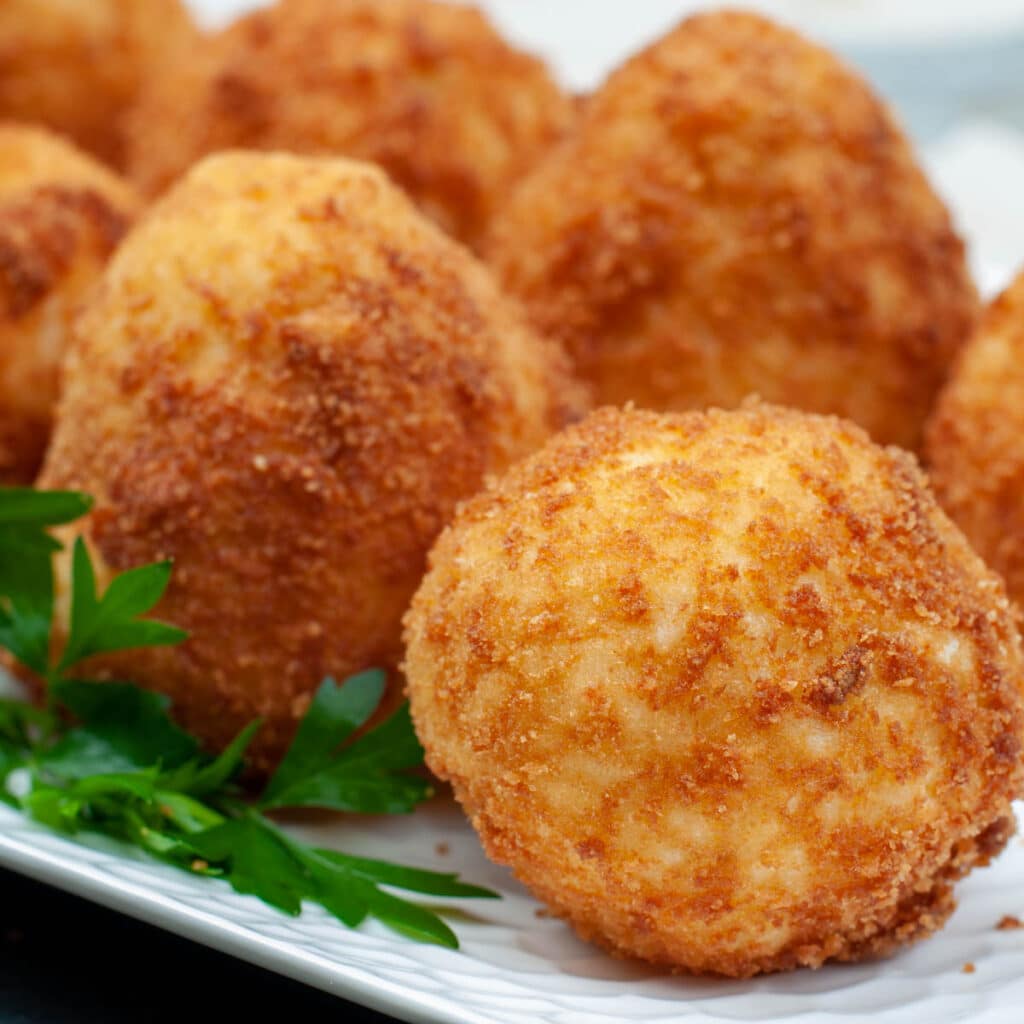
More refined and elaborate seafood starters are:
- Seafood Fritto Misto or fried calamari
- Octopus salad
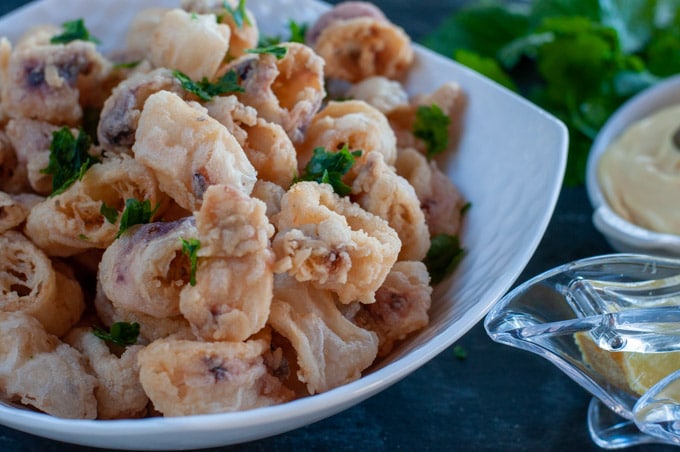
Or vegetables like:

Primi piatti
Primi piatti are pasta, risotti, gnocchi or soups like minestra. All are eaten in a pasta bowl and are not served with other food at the same time.
Depending on the recipe, grated Pecorino Romano, Parmesan cheese, or Ricotta Salata cheese (to name a few) are offered in a serving bowl with a spoon for everyone to add to their plate.
Cheese is never served with seafood dishes, it can be substituted with toasted breadcrumbs or grated almonds.
You can find some Primi Piatti ideas in the categories:
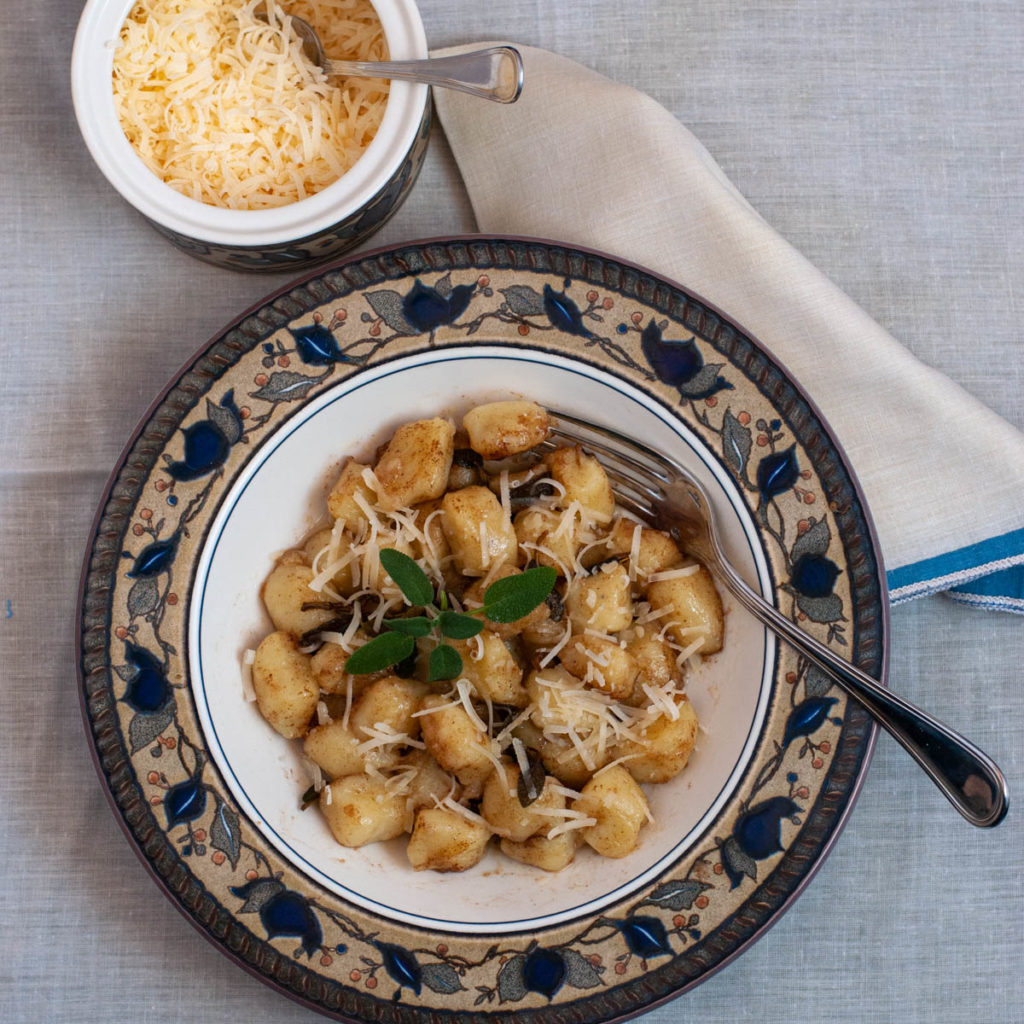
Secondi piatti
Il Secondo is usually a main dish of meat or seafood, and in luscious meals, you will have both.
If there is more than one secondo piatto, seafood is served first, then a lemon or lime sorbet to rinse the palate.
After the sorbet the meat is served, first the white meat (poultry or rabbit), then the red (beef, lamb or pork).
Usually, meat and seafood are served as they are cooked, meaning the sauce and the vegetables they are cooked with as from the recipe.
Any other vegetables or side dishes are served simultaneously but on different serving dishes.

Side dishes Contorni
Side dishes are served at the same time as the secondo, they are usually cooked warm or cold vegetables or salads and/or potatoes.
Salads can be simple romaine lettuce served in a large bowl seasoned only with extra virgin olive oil and red wine vinegar.
If you serve more than one secondo seafood and meat, each secondo will have its own side dishes.

If you are serving two types of the same course (two types of meat or two types of seafood), you can find side dishes that will go well with both.
Usually, one of the side dishes is a potato dish, either warm, like roasted potatoes, or cold, like a potato salad.

Cheese, desserts and liqueurs
To end the perfect Italian dinner, you can serve some cheese with some crusty bread, but it is unnecessary.
You can find a selection of Italian and French cheese in these articles.
For Italian dessert, you can either have someone buy a pastry assortment Pasticcini della domenica, or make your own cake.
Here you will find a list of desserts to choose from.
For special holiday celebrations, some traditional Italian desserts are a must-have.
You can find some of those recipes in the category: cookies and festivities desserts
To finish any important Italian dinner, you must have a selection of liqueurs to serve so guests can digest your lavish meal.
Sure, you can buy them, and that is okay.
But if you have your own homemade selections, you will be a hero, everyone will praise and admire you and will be remembered for generations to come.
If you want to try it, you can find a collection of recipes in the category:homemade liqueurs.
Surprise your friends and family with an unusual edible gift.

Build up memories
Celebrating a special dinner is a great way for the family to bond; it builds up memories that will stay with you for the rest of your life.
When family members eventually leave us, those meals are the perfect opportunity to remember them through their recipes and cooking skills.
For my boys and me, Sunday meals are a way to remember my late husband Robert, and his barbecue skills.

Ideas for menus
Italian Sunday meals are not preplanned, they are based on what is in season, fresh on the market, or at the fishmonger's stalls.
On Saturday, take a stroll to the local farmer's market. See what looks fresh and inspiring and build your menu around that.
If you see a new ingredient, try and experiment with it. After all, what are families for?
Cook for them and ask their opinions on how a recipe can be improved or what can be combined with.
Next time you have unexpected guests, you will be able to get a perfect dinner with no stress and in no time.
If you want to find out more about the way Italians plan their meals based on simple ingredients that are fresh and look good at the market, you can read my article:
A Family Meal Planner Based On Fresh Vegetables
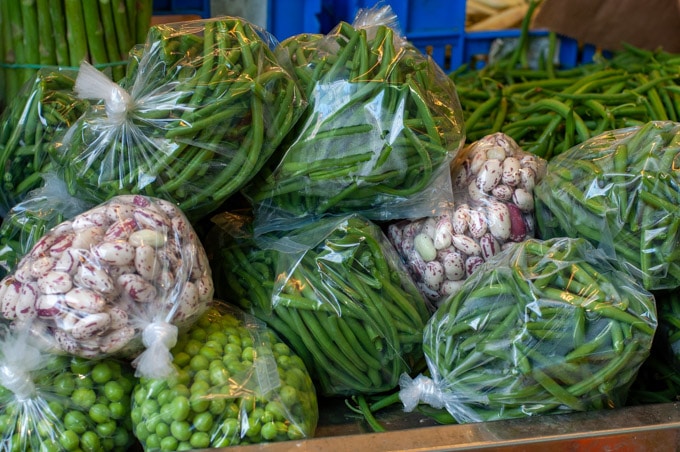
Planning an Italian party
If you are planning an Italian party, besides the menu and the meals you are preparing, it is important to follow the Italian table setting and etiquette.
I always use my nice dishes on Sunday.
What better occasion to treat yourself and your family to a fancy table set?
Children should be involved in the table setting, so they can learn from an early age how to set the dinner table and how to eat properly.
You can read more about it in the article coming up next: Italian Table Setting And Etiquette.
Fun fact: Did you know you are not supposed to say: "Buon appetito" before dinner starts?
Find out why in the article above!

More articles you may like
For more information about Italian cuisine history, tradition, and culture, you can read: 77 traditional Italian ingredients and best brands, 36 Essential Herbs And Spices Used In Italian Cooking, history of traditional Italian food by region, 32 most popular Italian street food, 22 Italian breakfast recipes, Italian Sunday dinner a 6 meal courses.
For more classic Italian recipes and Italian dinner ideas, you can find my recommendations of authentic Italian cooking books translated into English in my Amazon shop section: Cooking Books
Hope you find this article helpful, please if you have any questions, write them in the comments below and I will be happy to respond and help. For more information, you can visit the category: Italian food traditions. You can find delicious ideas if you FOLLOW ME on Facebook, YouTube, Pinterest and Instagram or sign up to my newsletter.



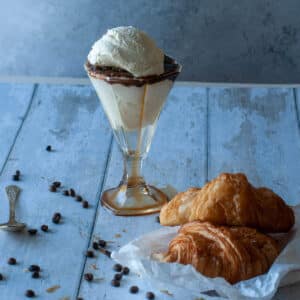
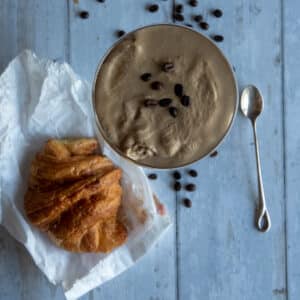
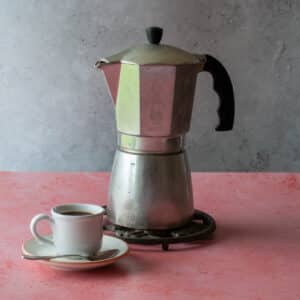
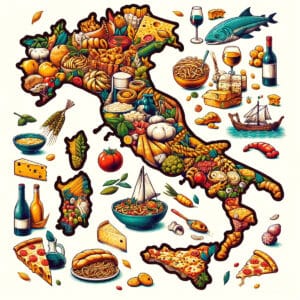
Leave a Reply